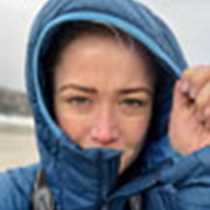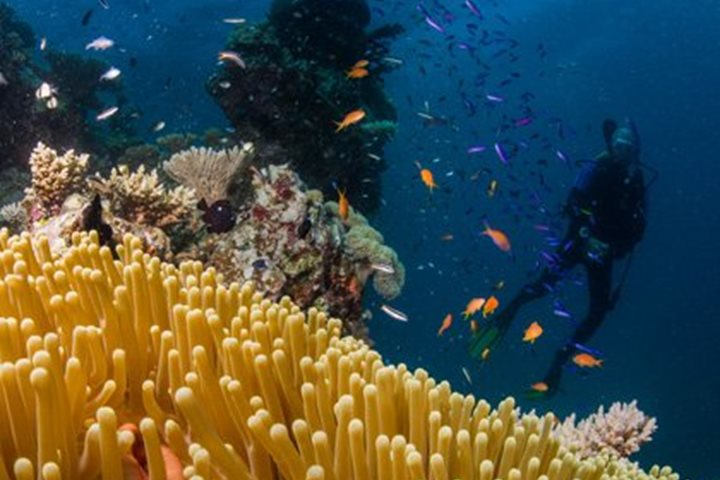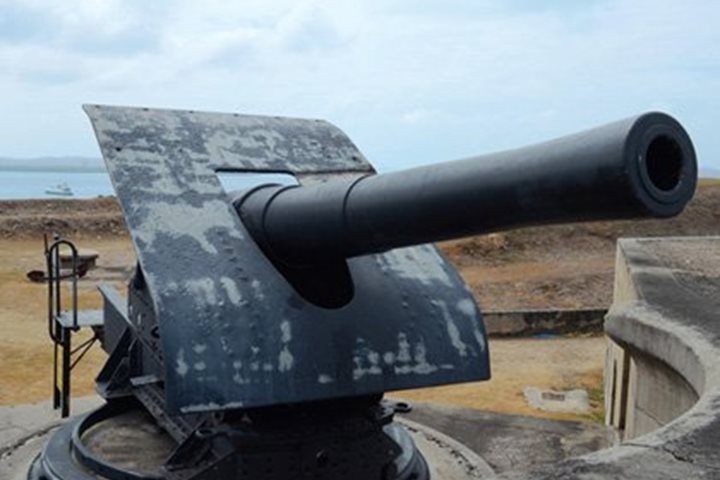Our destination today was Lizard Island – a small granite island in the midst of the extensive Great Barrier Reef system. At 10 km squared, this island is a mere speck in size compared to the overall reef, but as we found out today it is well worth a visit. Named by Captain Cook in the late 18th century on account of the number of lizards Cook and his crew found here, Lizard Island is now known for its proximity to what are some of Australia’s greatest underwater experiences.
With such a wealth of marine life surrounding the island it is no surprise that the Australian Museum has a marine research station here. Today we visited this research station, where we enjoyed a guided tour and heard more about the important coral reef research that has been on-going since 1973.
The divers and snorkelers got a chance to witness the marine life first hand throughout the day. Despite this island being hit by a cyclone in April of this year, the reefs close to shore were bursting with colorful fish life and enormous clams. Further offshore the divers reported a reef that has obviously suffered from the cyclone, but the fish and invertebrate life was varied and interesting – proving that this reef is already well on its way to recovery. Hundreds of long whip corals were projecting from the reef, creating a scene that looked more akin to a meadow of tall grasses swaying in the breeze than an underwater reef. A couple of the divers were lucky enough to spot a few white tipped reef sharks cruising across the reef.
For those interested in land-based challenge, a long hike was offered up to Cook’s Look – the highest point on the island. With the peak lying at 359 m/1178 ft., the hike wasn’t for the faint hearted! It was undoubtedly worth the effort though, with magnificent views stretching out across the reef and the immensity of the Pacific Ocean beyond. A strong breeze kept everyone cool throughout the steep climb. A natural history walk was offered for those after a more leisurely land-based activity. This walk allowed more time to take in the wildlife and plant life of Watsons Bay with helpful interpretation from Richard and Tom.
Following a leisurely lunch on-board, it was time to enjoy an afternoon of water sports – or for those not so keen on jumping in, it was time for more glass-bottom boat tours, one of the standout highlights of this trip. The research station tours also continued in the afternoon and for those wishing to enjoy a relaxing afternoon onboard, the Observation Lounge provided the best vantage point to watch the afternoon activities while enjoying a coffee.
Nobody wants to have to think about disembarking a ship after a voyage as memorable as this Indonesian Odyssey, but disembarkation was looming. Having handed back our still dripping snorkel gear and packing up our suitcases, there was plenty of time left to enjoy one last exuberant evening onboard the National Geographic Orion. Everyone convened in the lounge with Captain Vincent Taillard to toast our successful voyage before enjoying a superb farewell dinner in the restaurant. There has been no shortage of superb meals onboard and this final dinner was yet another one to remember.






